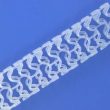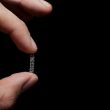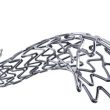Courtesy of Dr. Carlos Fava. Surgical aortic valve replacement (SAVR) continues to be elective, but the presence of post-procedural acute myocardial infarction (AMI) has been associated to bad evolution. Despite the proven benefits of TAVR for high risk patients and the progress shown by patients of intermediate risk, the incidence of post implantation MI has...
Biodegradable-polymer stents are as safe as permanent-polymer stents in a 5-year follow-up
Courtesy of Dr. Carlos Fava. One of the questions around drug-eluting stents (DES) is whether the development of biodegradable polymers would derive in better outcomes than the performance of durable polymers as regards the presence of events. In consequence, the COMPARE II trial was carried out with the aim of testing them in “real-world” patients. This...
Mortality at one year in post PCI myocardial infarction
Courtesy of Dr. Brian Nazareth Donato. Multiple definitions with biomarkers and variable thresholds have been proposed to diagnose post procedural MI. The last update of the Third Universal Definition of Myocardial Infarction decided to use only troponin values with a threshold >5 over the normal value, on top of the clinical evidence by ECG, echocardiography...
Angioplasty in lesions due to radiation treatment presents similar mortality rates
Courtesy of Dr. Carlos Fava. Thoracic radiation causes cardiac lesions, and coronary arteries are among the most affected structures. Furthermore, it provokes obstructive lesions due to wall fibrosis. Generally, patients with this background are not eligible for surgery and receive angioplasty, a seemingly great alternative. However, there is no clear information on outcomes yet. This...
SOLACI symposium at EURO PCR 2017
The Latin American Society of Interventional Cardiology proudly joined the international meeting “Euro PCR 2017”, celebrated on May 16 to 19 in the city of Paris, France. During the event, a delegation of prominent professionals, headed by SOLACI Chair Dr. Ricardo Lluberas, presented a live case entitled “Complex Left Main PCI”. The transmission took...
Early Endarterectomy Seems Superior to Carotid Stenting in Symptomatic Patients
Patients with symptomatic stenosis of the internal carotid artery benefit from early intervention. The challenge lies in what intervention to choose. Most studies comparing endarterectomy to carotid stenting are fairly heterogeneous as regards timing of intervention. This element is key to comparing between procedures, since there is no doubt timing will directly affect results. ...
EuroCTO: Rechanneling vs. Optimal Medical Treatment in Total Occlusions
Courtesy of the SBHCI. Chronic total occlusions represent around 18% of all coronary lesions. However, they account for just 5% of all interventions, which means that many patients only receive medical treatment. This prospective, open, multicenter study randomized patients with multivessel lesions in whom at least one of these was a chronic total occlusion. Patients...
AIDA: bioresorbable scaffold thrombosis still a concern in studies
Courtesy of the SBHCI. This study presented at PCR and simultaneously published by NEJM still challenges the safety of bioresorbable scaffolds. This was a multicenter noninferiority work carried out in the Netherlands, comparing 1:1 everolimus-eluting bioresorbable scaffold ABSORB and permanent-polymer everolimus-eluting stent Xience. The primary endpoint was target-vessel failure (a composite of cardiac...
Leaders Free ACS: Good Results for the Polymer-Free Stent at 2 Years in ACS
Courtesy of the SBHCI. Guidelines recommend dual antiplatelet therapy for a year in patients admitted with coronary acute syndrome. However, patients at high risk for bleeding who receive coronary angioplasty have been historically excluded from studies. The new polymer-free stent BioFreedom allows for the reduction of dual antiplatelet therapy time, due to rapid drug elution...
EVOLVE II: Diabetes Substudy: Results at 3 Years after the SYNERGY Stent in Diabetics
Courtesy of SBHCI Diabetic patients have worse evolution after coronary PCI. Drug eluting stents with bioresorbable polymers were designed to facilitate arterial healing, and reduce inflammation and late and very late thrombosis risk. This sub-study of diabetic EVOLVE II patients presents the 3 year outcomes of the SYNERGY stent. The EVOLVE II included...









